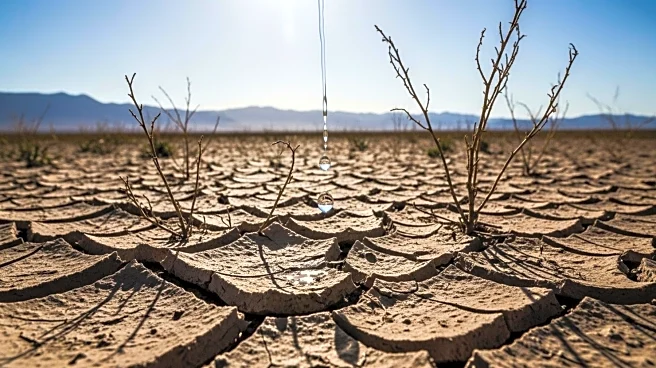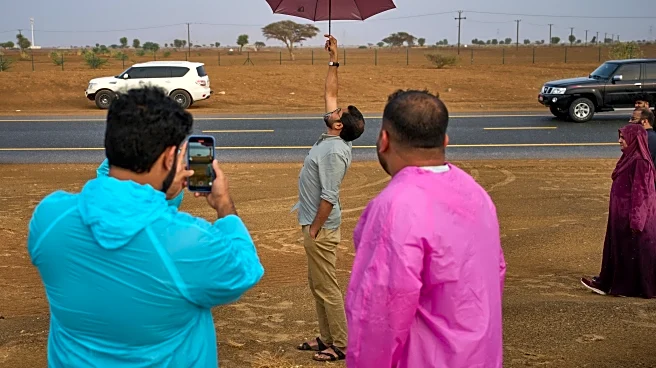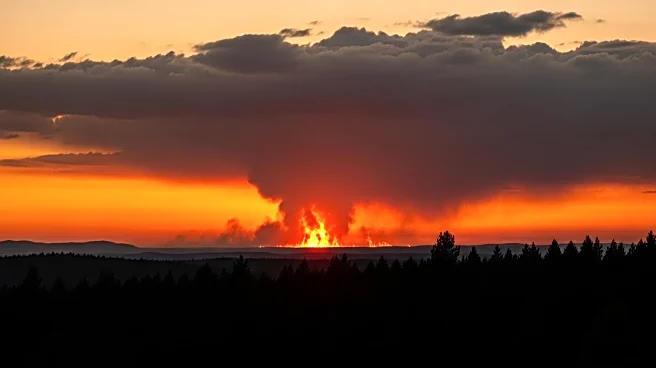What is the story about?
What's Happening?
The United Arab Emirates (UAE) is facing significant water scarcity challenges, ranking seventh worldwide for water scarcity risk according to the World Resources Institute. The country's population growth, particularly in Dubai, has increased pressure on water consumption, with the population rising from 255,000 in 1980 to approximately 4 million today. To address these challenges, the UAE has been employing 'cloud seeding' techniques, releasing chemicals into clouds to induce rain. Despite these efforts, the country experienced its heaviest recorded rainfall last year, disrupting travel and prompting leaders to reconsider urban planning strategies. The government is investing in infrastructure, such as desalination plants and rainwater drainage systems, to manage water resources more effectively.
Why It's Important?
The UAE's approach to managing water scarcity is crucial for its sustainability and economic stability. As the population continues to grow, the demand for water increases, posing risks to infrastructure and daily life. The government's investment in cloud seeding and desalination plants reflects a proactive approach to mitigating these risks. However, the heavy rainfall and subsequent flooding highlight the need for comprehensive urban planning to prevent future disruptions. The situation underscores the broader challenges faced by arid regions globally, where climate change exacerbates water scarcity and necessitates innovative solutions.
What's Next?
The UAE is likely to continue investing in advanced technologies and infrastructure to manage water resources. The government's $8 billion plan to build a massive rainwater drainage system in Dubai is a significant step towards addressing future climate-related challenges. Additionally, the country may explore further innovations in water conservation and management to ensure long-term sustainability. As global warming impacts weather patterns, the UAE's strategies could serve as a model for other regions facing similar challenges.
AI Generated Content
Do you find this article useful?
















